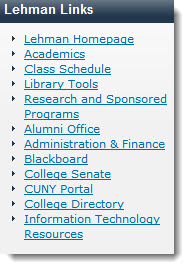Post-spring recess, we are back to exploring Daniel T. Willingham’s Why Don’t Students Like School? with renewed appreciation for our own times of reluctance to be in the classroom. Spring fever hits tenure-track faculty just at the time when grading and professional review expectations increase, and our students are also showing signs of restlessness in the midst of their growing lists of assignments.
Not much of a surprise, then, to find that our teaching challenge discussion concerned student behavior or that we wanted our students to establish classroom norms for themselves rather than to shift responsibility to their instructors. Nor was it much of a surprise to find that we were nearing the end of our semester-long discussions by sharing our struggles to keep students on track despite differences between those who master material and concepts quickly and those who seem far behind our intended schedules.
Willingham’s eighth principle states that people “do differ in intelligence, but intelligence can be changed through sustained hard work.” He breaks this principle into two main areas for discussion, one of intellectual capacity and one of intellectual development. He argues that the two are closely entwined.
Intelligence, read through Willingham’s research, connects closely with thinking. Intelligence is a combination of problem-solving skills, use of working memory, and expansion of both working and long-term memory to support mental tasks of increasing complexity. Intelligence, then, is active and can be affected by intentional practices that increase its capacities as well as by neglectful or passive practices that allow working and long-term memory to atrophy. This is good news for those of us raised to believe that brain cells die over our lifetimes without the regeneration typical of other organs: we do not necessarily become less intelligent as we age. (Willingham does not address fatigue, hormonal changes, or stress as factors that might cause aging to affect intelligence temporally or indeed long-term).
In reading this chapter, I was reminded of a NewsRadio episode [http://youtu.be/pfOd4ccy8p0] in which the media editor Matthew, generally hapless and more than a few steps behind, drinks a potion called “Smart Juice.” Convinced that he has been doped into genius, Matthew renames himself SMatthew (Smart Matthew) and marvels his colleagues with his abilities to reason and to absorb new information. Sadly, SMatthew discovers that he has been drinking a placebo, and his smart self is unable to sustain the fiction his less capable self happily embraced.
Willingham’s principle clearly opposes this magical thinking. Sustained hard work is the subtext of each chapter’s argument for enhancing intellectual abilities. Moving from the capacity of intelligence to its development, Willingham then reviews the nature versus nurture debate. Which is more important to intelligence, genetics or environment? Willingham points out that this is in some ways a false dichotomy: what seems to occur in our lives is not only an increase in intelligence but a self-selection towards the environments in which our specific strengths of intelligence (verbal, quantitative, analytic, and creative, as examples) are supported in continuing to intensify and improve. We seek out what reinforces our sense of who we can be.
This sounds encouraging, and yet in this text, Willingham does not address the environments within which most of us live and work, engaged with identities of race, gender, ethnicity and culture, sexuality, religion, and economy. How much can any of us self-select into a supportive intellectual environment that maximizes our capacities when our capacities for health, prosperity, and overall self-determination are so limited? These are questions that are and should be present for us in the classroom and in our preparations and assessments of our teaching.
As we move into the final chapters of our shared text and the final weeks of the term, we are facing these questions with a deeper understanding of what brings each of us to teaching and learning. The experience of sharing teaching challenges across disciplines in the context of a larger discussion of how we and our students learn and can learn now brings us to the question of how we practice our teaching more effectively at the same time that we ask our students to learn more effectively.




